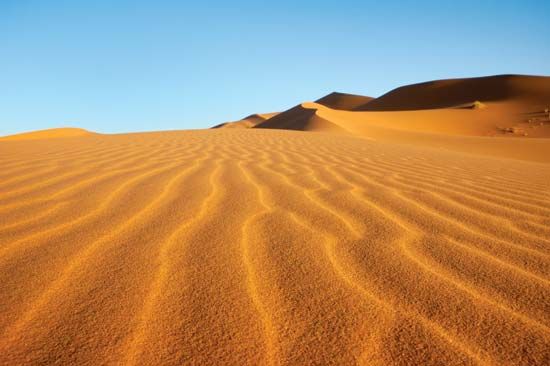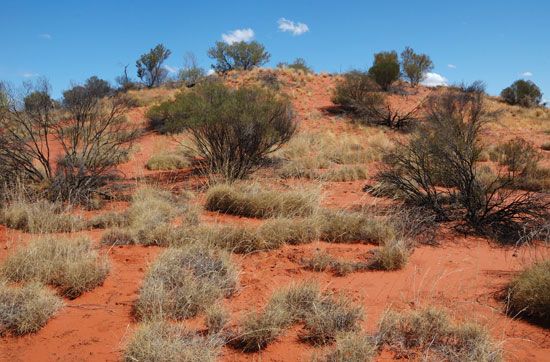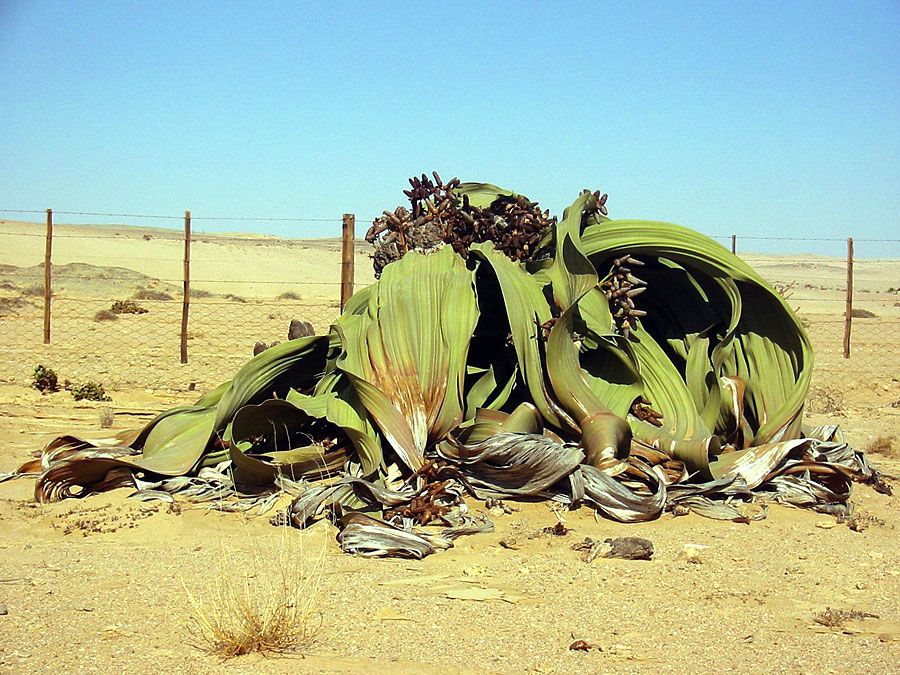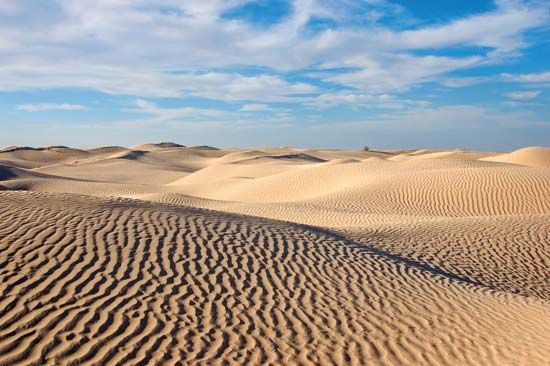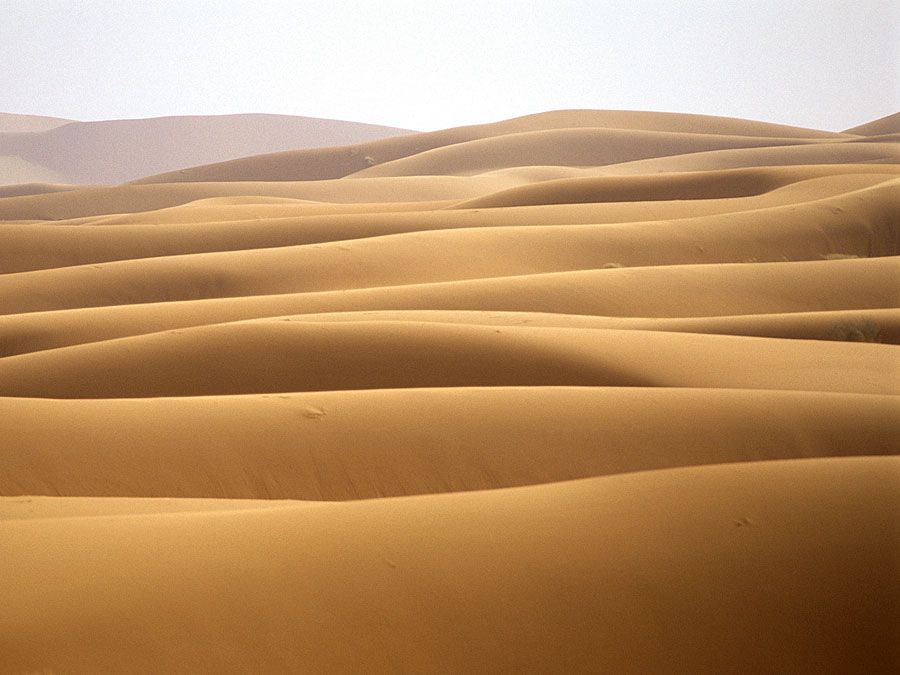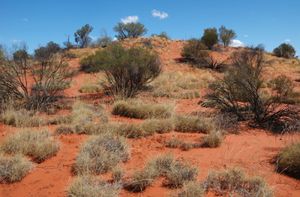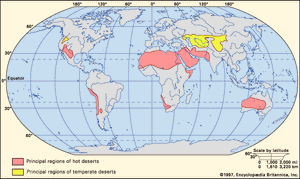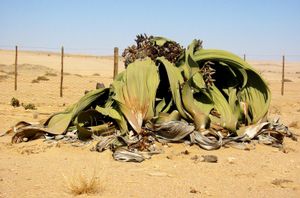desert
- Related Topics:
- desertification
- cold desert
- polar desert
- alpine desert
- semidesert
desert, any large, extremely dry area of land with sparse vegetation. It is one of Earth’s major types of ecosystems, supporting a community of distinctive plants and animals specially adapted to the harsh environment. For a list of selected deserts of the world, see below.
Desert environments are so dry that they support only extremely sparse vegetation; trees are usually absent and, under normal climatic conditions, shrubs or herbaceous plants provide only very incomplete ground cover. Extreme aridity renders some deserts virtually devoid of plants; however, this barrenness is believed to be due in part to the effects of human disturbance, such as heavy grazing of cattle, on an already stressed environment.
According to some definitions, any environment that is almost completely free of plants is considered desert, including regions too cold to support vegetation—i.e., “frigid deserts.” Other definitions use the term to apply only to hot and temperate deserts, a restriction followed in this account.
Origin
The desert environments of the present are, in geologic terms, relatively recent in origin. They represent the most extreme result of the progressive cooling and consequent aridification of global climates during the Cenozoic Era (65.5 million years ago to the present), which also led to the development of savannas and scrublands in the less arid regions near the tropical and temperate margins of the developing deserts. It has been suggested that many typical modern desert plant families, particularly those with an Asian centre of diversity such as the chenopod and tamarisk families, first appeared in the Miocene (23 to 5.3 million years ago), evolving in the salty, drying environment of the disappearing Tethys Sea along what is now the Mediterranean–Central Asian axis.
Deserts also probably existed much earlier, during former periods of global arid climate in the lee of mountain ranges that sheltered them from rain or in the centre of extensive continental regions. However, this would have been primarily before the evolution of angiosperms (flowering plants, the group to which most present-day plants, including those of deserts, belong). Only a few primitive plants, which may have been part of the ancient desert vegetation, occur in present-day deserts. One example is the bizarre conifer relative welwitschia in the Namib Desert of southwestern Africa. Welwitschia has only two leaves, which are leathery, straplike organs that emanate from the middle of a massive, mainly subterranean woody stem. These leaves grow perpetually from their bases and erode progressively at their ends. This desert also harbours several other plants and animals peculiarly adapted to the arid environment, suggesting that it might have a longer continuous history of arid conditions than most other deserts.
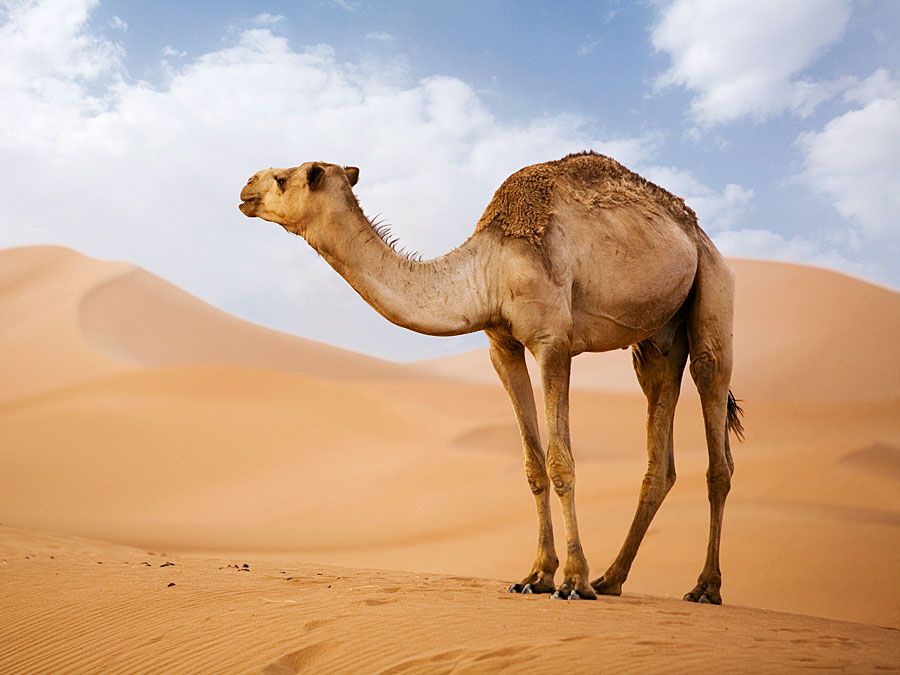
Desert floras and faunas initially evolved from ancestors in moister habitats, an evolution that occurred independently on each continent. However, a significant degree of commonality exists among the plant families that dominate different desert vegetations. This is due in part to intrinsic physiologic characteristics in some widespread desert families that preadapt the plants to an arid environment; it also is a result of plant migration occurring through chance seed dispersal among desert regions.
Such migration was particularly easy between northern and southern desert regions in Africa and in the Americas during intervals of drier climate that have occurred in the past two million years. This migration is reflected in close floristic similarities currently observed in these places. For example, the creosote bush (Larrea tridentata), although now widespread and common in North American hot deserts, was probably a natural immigrant from South America as recently as the end of the last Ice Age about 11,700 years ago.
Migration between discrete desert regions also has been relatively easier for those plants adapted to survival in saline soils because such conditions occur not only in deserts but also in coastal habitats. Coasts can therefore provide migration corridors for salt-tolerant plants, and in some cases the drifting of buoyant seeds in ocean currents can provide a transport mechanism between coasts. For example, it is thought that the saltbush or chenopod family of plants reached Australia in this way, initially colonizing coastal habitats and later spreading into the inland deserts.

